Personality Development Assignment: Importance Of Communication On Individual Personality &Behavioural Traits
Question
Task:
Write a detailed personality development assignment addressing the followings parts:
Part 1
Every person has a unique communication style, a way in which they interact and exchange information with others.
Name the four types of communication styles.
Part 2
It’s important to understand each communication style, and why individuals use them. For example, the assertive communication style has been found to be most effective, because it incorporates the best aspects of all the other styles.
When we break down these four styles, we’ll better understand the characteristics of each style, standard phrases and what makes them unique.
Select one communication styles
and reflect on the application and outcomes in detail.
Make sure to in cooperate your classroom/school context in your reflection.
Part 3
Write a short bio that could impress your potential employer or client be accurate, informative and memorable.
Include the following
- Your name
- Your current job title
- Your company name
- Your hometown
- Your alma mater
- Your personal and professional goals
- A relevant achievement or accomplishment
- Your hobbies
- Your skills and areas of expertise
Be creative and innovative as you prefer.
Answer
Executive summary
The report findings obtained in this personality development assignment reflect the importance of communication for fostering personal and professional networks. The communication style impacts both personal and professional spheres of life. The findings depict the importance of efficiently developing a communication style that fosters better outcomes in academic, personal, and professional fields. The report reflected the effectiveness of the assertive communication style in fostering bonding, solving problems and personal development. The schools must adopt assertive communication workshops and training sessions to improve students' competencies to solve problems and perform well in essential spheres of life. It is suggested to use the DISC model to determine the flaws in the current communication style and undergo an assertive training session to develop interpersonal skills.
Introduction
The teaching practice allows students and teachers with authentic and hands-on experience to foster effective teaching in the classroom. In the early childhood phase, education, curriculum activities, and practicums provide both teachers and students with opportunities to apply learning and knowledge in action (Kim, 2020). The curriculum activities, teaching sessions and strategies in early childhood learning tend to shape children personalities, communications style and coping abilities. Early childhood learning is not limited to enhancing academic performances only. The teachers are responsible for improving the students key skills set, attitude, personality and communication by teaching programs and practicums. The teaching learned in early childhood helps the child combat varying challenges faced by students in learning. The influential teaching efficacy is confirmed by developing children's skills set and personalities. Through the teaching programs and practicum, the teachers can improve children's competencies to interact, confront issues in learning, and perform better in both personal and academic fields.
The core purpose of the report is to reflect the importance of communication style in shaping an individual personality and behavioural traits. Using Kolb's reflective learning cycle, the reflection on individual communicator style development will be discussed. A brief short bio for employers will be reflected in the report to better understand individual chief strengths fostering better chances of obtaining employability.
Part 1: Four common communication styles
The communication style can speed up meaningful connections. This connection plays a circular aspect of success in an individual life. An effective communication style has the power to facilitate a strong, stable and interpersonal connection that has a positive implication on both the mental and physical health of people (Kucharski and Rutkowska, 2019). On the other hand, poor communication can lead to experiencing a poor connection that further affects individual well-being. It is further determined that effective socializing, communication, and connectedness with others lowers the possibility of developing depression or anxiety. Further, the personnel with meaningful connections tend to live longer (Kucharski and Rutkowska, 2019). A good communication style is necessary for both personal and professional fields. An effective communication style that can connect with others directly correlates with job performance and career success. The efficient communication style builds a cohesive culture and healthy environment. The four communications styles that most individuals habitually adopt are:
1. Passive
2. Aggressive
3. Passive-aggressive
4. Assertive
Passive communicators
Individual who inherits passive speaking manner often faces strenuous pressure to express themselves and tend to give in to others (Intervention and Center, 2014). The failure to express emotions and thoughts often builds up resentment/anger and miscommunication. The resemblance of the specific behaviours can recognize the passive communicators. Passive communicators have difficulty saying no, fail to make eye contact, have poor posture and go with the flow type attitude. In the passive communications style, the individual avoids directly mentioning their thoughts and often engages in uncomfortable body language. Often people facing social anxiety issues adapt to a passive communication style (Kucharski and Rutkowska, 2019). If a person is suffering from social anxiety, the communication style will automatically become weak when meeting new people, social gatherings, and making confrontations. It is the main reason passive communicators fail to be assertive and, in the end, allows others to take their advantage. The passive communicators often ignore conflicting situations that cause harm or discomfort feelings. It is the pivotal reason passive communicators are prone to experience grievances to be not noticed by others. The impact of this style leads to feeling out of control and consistently anxious. The feeling of depression and resentment is possible (Refer to appendix 1).
Aggressive communicators
Aggressive communication has the habit of taking things to the other side of the spectrum (Intervention and Center, 2014). The individual inheriting this specific communication style often becomes highly dominating among friends, home and workplace. This personnel often commandand rudely ask questions (Refer to appendix 2). This communication style is mostly used by business leaders or bosses in the workplace, and they often talk over other people and have poor listening abilities (Kucharski and Rutkowska, 2019). The people following this type often interrupts others, judges them, stares and glares intensely, frowns for no reason and intimidate, criticize and threaten others. However, there are downsides of this communication style, including dominating others, using humiliation to control others, criticizing/blaming others, acting impulsive, having low frustration tolerance, and speaking loudly, which often sounds demanding and overbearing. In a professional setting, an aggressive communicator can act highly superior and make others feel wrong/inferior.
Passive-aggressive communicators
The individual using this communication style can look passive on the outer surface however tend to have hidden resentment that comes through in subtle or indirect ways (Intervention and Center, 2014). The passive-aggressive communicators use frequent sarcasm. These individuals' words and actions fail to align with each other. Further, the facial expression also is different from said words. The individuals who are inheriting this communication style face issues in considering their emotions/feelings. These individuals feel stuck, powerless and resentful. They find themselves facing obstacles in dealing directly with the object of their resentments. These individuals express their anger by indirectly undermining the object (imagined or real) of their resentments. They often mutter rather than be open about their feelings and confront others. They often use denial to avoid the issues or problems (Kucharski and Rutkowska, 2019). The personnel act as cooperative while often doing things that disrupt or annoy others. The individuals utilize subtle sabotage to get revenge. These features in the communication style can lead to feeling alienated, feeling stuck in a powerless situation and discharge of resentment due to not overcoming real problems with a mature attitude. Passive-aggressive communication signs include backhanded compliments, sulking, procrastination withdrawal, and refusal to communicate (Refer to appendix 3).
Assertive communicators
Aggressive communication is depicted as a style in which people express their opinions, feelings and advocate their needs in a way that often ends up violating the rights of others (Intervention and Center, 2014). The assertive communication style offers an efficient and healthy way to express thoughts, feelings and perceptions. The assertive communicators are often motivated to be open, use honest dialogue and better comprehend the needs of others. The assertive communicators can be recognized based on their behavioural traits. An assertive communicator effectively expresses the needs and desires by upholding confidence. The assertive communicator can effectively promote balanced conversations in which both parties engaged have the power to speak (Kucharski and Rutkowska, 2019). They have the power to refuse in case of discomfort and maintain good eye contact. An assertive communicator style of speaking is fluent, which helps them build both professional and personal networks. The individual inheriting this communication style can outshine other communicators due to reflecting confidence. The people following this type value their spiritual, emotional and physical needs and behave very respectfully towards others. They respectfully communicate with others by ensuring control of themselves. They speak calmly and clearly with a relaxed body posture that allows people to feel connected. An assertive communicator behaves competently and takes and does not allow others to abuse/manipulate them (Refer to appendix 4).
Part 2: Assertive communication style application and reflection
According to Morris (2020), efficient learning requires educational and practical experience. The findings depict that "all genuine education comes about through experience." The learners, to be efficient, are required to undergo four different kinds of abilities- concrete experience abilities (C.E.), abstract conceptualization abilities (A.C.), reflective observation abilities (R.O.) and active experimentation (A.E.) abilities. Individuals must involve themselves in these phases without bias in new experiences (Morris, 2020). It allows individuals to reflect and effectively observe their experiences from varying perceptions, and it allows creating notions that incorporate observations into logically sound awareness. Experiential learning fosters scope for making better decisions and solving problems after learning effective aspects from new experiences (Morris, 2020).
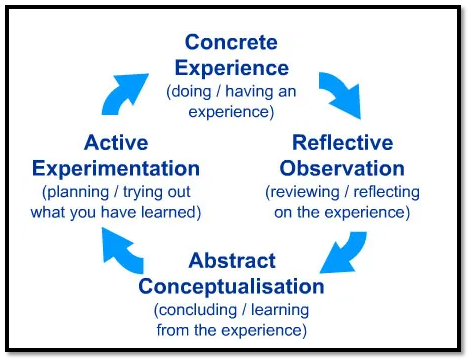
Figure 1: Kolb's reflective learning cycle stages
(Source: McLeod, 2018)
Kolb's experiential learning cycle is undeniably the most scholarly influential and cited model regarding experiential learning theory. Similarly, Kolb's reflective learning cycle will be used to analyze individual learning about the communication style:
Concrete experience
This stage defines new situations/experiences encountered by individuals (McLeod, 2018). Assertiveness is depicted as a key notion in social and emotional learning, representing the model ground between extremes of passivity and aggression. I observed that from the beginning, I had these traits of standing for myself without diminishing or hurting others. In classrooms, also I had this attitude of communicating my opinions and emotions with confidence which is a key behavioural trait of an assertive communicator. Assertive communication can be strenuous to adopt as the culture often rewards aggression.
I remember engaging in open interaction with teachers on a subject's doubts and clarifying questions with ease, reflecting my assertiveness skills. While feeling confused or having doubts, I believed in direct communication to understand. These behavioural patterns soon become my dynamics, patterns and behaviour of communication. I raised my voice against bullying, which was practised by seniors or juniors. Speaking my mind with confidence often motivated my friends to stand against the wrongdoing. I realized that communication was powerful and had the power to shape personal bonding and relationships. I inherited assertiveness skills du to which my teachers nominated me for class representative.
Teachers valued my confidence, effectively addressing classroom issues and standing against bad behaviours. I learned concisely that, no doubt, my communications skills are my chief strength. It is the major reason I won prizes for a speech competition and performed prime characters in skits curriculum activities.
These constant curriculum activities further were beneficial in empowering my confidence, improving interpersonal skills and classroom performance. I supported my friends to behave appropriately and perform well in academic spheres by interacting with them. I was often rewarded for my consistent, exceptional behaviours, and teachers entrusted me with responsible tasks. I realized that my natural traits soon helped me outshine other students in the classroom. I valued teachers' opinions and suggestions that further helped me make efficient decision-making that progresses academic and performance progressions. I listened to teachers ' reasoning for making progress in the academic field, which was beneficial in initiating a positive difference in my academic scores. These events made me realize that communication is my plus point, which helps build connectedness, clearly interact with my ideas, and stand up for the rights of people.
Reflective observation
The reflective observation stage allows gaining awareness by reviewing and reflecting on the key learning from experience (McLeod, 2018). The classroom learning, curriculum activities and teachers feedback made me realize that experiences are crucial as it contributes to personal personality development. I realized a clear idea of my areas of chief strengths and weaknesses from the gained experiential learning. I understand that my chief strengths are speaking my mind, feelings, opinions and emotion with clarity. I understood that I value others opinions and often try to learn from others.
My natural assertive communication style allowed me to gain a series of opportunities, such as obtaining the position of class representative, winning speech contests and skits. I realized that communication style is not important only for academic growth; it also influences personal relationships. My assertive communication style allowed me to effectively make friends, blend with others, and perform team tasks/assignments. I always thrived on learning from my teammates and provided everyone with equal opportunities to speak about their viewpoints. I remember that my efficient decision making in the team assignment of environmental studies projects allowed me to gain higher marks. I even realized due to my assertive communication style, and I was able to interact, solve disputes and balance understanding among teammates effectively. I noted that my assertive communication style helped me build connected feelings, guide others, and create respectful and healthy environments for my teammates to perform with stress. I prioritize listening to others' opinions, which often helps me be competitive compared to others. Holding the position of a class representative from an early age developed a sense of responsibility and acted accordingly. I am aware that my assertive communicationstyle was beneficial in combating distressing situations such as upsetting behaviours, taking ties back positively and being clear about class learning. The overwhelming instruction of teachers guided me inefficiency, progressing my skill set that contributed to excellent academic performance and gaining recognition in the classrooms.
Abstract conceptualization
In this stage, the individual gain new ideas from the obtained experiences that further modify existing abstract concepts (McLeod, 2018).
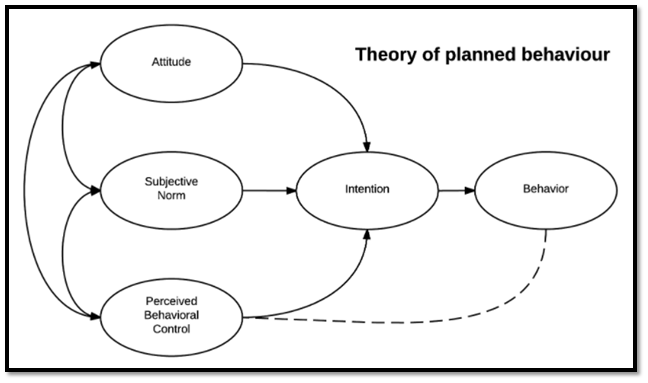
Figure 2: Theory of planned behaviour
(Source: Bosnjak et al. 2020)
The theory of planned behaviour (TPB) of psychological theory depicts an interrelationship between beliefs and behaviours; The theory suggests that maintaining three core attributes of subjective norms, attitude and perceived behavioural control contributes to individual behavioural intentions (Bosnjak et al. 2020). As opined by Omura et al. (2019), the need for assertive communication training is increasing due to its ability to effectively respond in dire situations. The TPB theory can be dropped to improve the individual attitude, behavioural traits and subjective norms to inherit an assertive communication style. According to the theory, assertive communication training is mandatory for children's development to motivate them to stand against bullying, foster strong personality development and perform well in academic spheres (Ajzen, 2020). This way, the students can interact efficiently about the problem of depression or anxiety to get the right guidance and direction from the teachers. The students are prone to experience such issues due to inner conflicts in communicating, which accumulates as emotional turmoil.
I believe that assertive communication workshops, training and curriculum are important for student personality development. Assertive training and workshops must be deployed in the school curriculum to foster changed behaviours and support students' personality and communication development. I'm certain that these programs and workshops can facilitate realistic differences by building the efficient communication capabilities of students. These aspects can effectively shape the student's behavioural traits to accomplish challenging assignments/ tasks with a holistic and confident approach. The right guidance from an early age can be beneficial in improving students' level of competencies. The insights gained from my experiences have helped me understand the importance of assertive communication style development for the students. I believe the deployment of assertive communication training will allow students to accommodate skills to better manage themselves, people and situations. This can even help the students positively influence others to obtain acceptance which will lower the risk of developing anxiety or depression among children. The child facing social issues can stand for themselves and handle situations more aggressively. The students will be able to develop, perform well, and inherit problem-solving attitudes are some beliefs I believe can be obtained by students.
Active experimentation
In this stage, appropriate planning to apply experiential learning is facilitated. The accommodating learning styles in an efficient manner can foster better opportunities by preferring a practical and experiential approach (McLeod, 2018). I believe that my gained exponential learning will perfectly allow me to better respond to new challenges and gain experiences. I can strategically carry out plans that ensure better employability by using my chief strength of assertive communications skills. It is determined that assertive managers are highly demanded in the business spheres. By carrying out efficient planning to enhance my assertive communication style, I can expand my chances of gaining the position of manager in reputed organizations. I can effectively act logically due to obtaining awareness from experiential learning. It is identified that individuals with accommodating learning styles avoid relying on others by making paths for themselves.
I believe in the same ideologies of benefiting myself from the gained information. I can join grooming training that stresses enhancing personnel personality and helps them outshine others in a professional setting. I will enrol myself in assertive communication training and workshops to improve my chances of gaining a manager position in professional settings. These workshops and training sessions will enlighten me with real-life situations and adopt the necessary skills to respond to them. The assertive communication training will increase my chances to impress employers with a confident, professional and practical knowledge of handling intense situations. This way, I can groom my natural behavioural trait to gain a better employability position. I can get hence my existing knowledge and practical capabilities to make the best of the opportunities provided with a positive outlook.I think that the initiation of assertive communication training and workshops can improve student coping capabilities with stressors. The children will be able to speak their minds by not fearing a stressful environment. The right guidance based on the issues can be provided by involving the crucial parties. I believe that these types of initiation are crucial to empower students to combat social issues with confidence.
Part 3: Short Bio for impressing employers
Hi, I’m Jenny.
My name is Jenny Richards currently working as a seasonal marketing analyst. I love my hometown Edinburgh. I am a seasonal marketing analyst who has spent around the past 3 years working with individuals and companies to bring their best. Through my innovative and unique approach to market researching advertising, I ensure that clients can reach their business targets every time. Some of my large clients Just ate and Food hubs. I specialize in working with small scale startups companies. I can ensure that projects directed by me are well researched and proposed actions backed by years of experience and successful examples.
I prefer challenging projects that allow professional growth and new experiences. I have completed my internship in a marketing analyst course at a nonprofit company in high school, in which I was assigned with marketing the annual charity held event. Since that day, I have been interested in the marketing field. My professional goal is to always look for challenging opportunities which contribute to my personal growth as an individual. My achievement was gathering my team of other interns capable of working through community outlets and social media to spread the word for the event on a budget of only 100 dollars. The turnout record was astonishing, which sparked my team passion for good marketing techniques. I graduated from Cumber Hawke, obtaining a degree in marketing and business. Further, I received my MBA in marketing from Carey school of business. I currently perform as a consultant to various firms and individuals who need professional assistance to derive better sales of their products line.
Conclusion
The conducted study findings reveal the importance of communication in the daily life of individuals. The major development task assigned to teachers in the relay childhood is developing students to learn to communicate. The teachers design educational programs, curriculum, and practicum that encourage students to develop interaction abilities to meet their needs. Communication development for young children mainly emphasizes improving students' ability to efficiently express feelings, thoughts, and information. There are four common communication styles: passive, aggressive, passive-aggressive, and assertive. Among the four common styles, the most alluring is the assertive communication style. The managers often inherit the assertive communication style that allows them to act as catalysts. An individual with an assertive communication style often attracts people's attention due to being righteous and confident figures in the general public. From the individual reflection, it is determined that natural assertive behaviour started to help in personality development and achieving academic feasibility. The study highlighted the importance of assertive communication training and workshops for the children. These aspects can improve students' ability to stand for themselves against bullying, depression or anxiety.
Recommendations
The most common communication styles often replicated by the people are four types. The communication style can be improved by gaining awareness of one present communication style and techniques (Kurz et al. 2021). Positive changes can be fostered after understanding the communicator style of communicating dynamics, patterns, and emotions.
Use of DISC model to gain awareness of existing communication style development
The DISC model can be used to better understand one's communication style and the ways one make decisions.
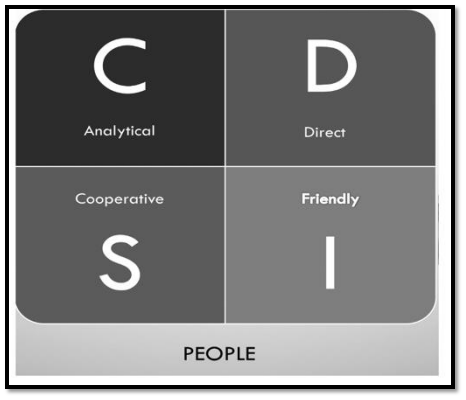
Figure 3: DISC model for understanding individual communicator style
(Source: Kurz et al. 2021)
The DISC profile provides clear and unbiased personality assessment results that analyze human behavioural patterns (Kurz et al. 2021). The DISC model mainly includes four aspects: dominance/drivers, Influence/inspiration, steadiness, and Conscientiousness/contemplative. The DISC model can better understand communicator strengths, weaknesses and opportunities for prospects and gaining greatness. Further, the model is also effective in understanding blind spots, biases, and unfulfilled needs that are depicted as poor behaviours (Kurz et al. 2021). These assessment models effectively encourage self-awareness that further fosters personal development, efficient communication style, and healthy relationships.
Deploying of assertive communication training and workforce for student personality development
The schools must undertake assertive communication training and workshops initiatives to strengthen children's cognitive abilities. These measures will automatically lower the emotional threat to students to infer social issues in school settings. The students will be potential enough to stay motivated, cope with dropout or setbacks, issues of eating disorders or parenting efficiently. The evolving assertive communication style will allow children to communicate with teachers to obtain counselling or required support at the right time.
References
Ajzen, I., 2020. The theory of planned behaviour: Frequently asked questions. Human Behavior and Emerging Technologies, 2(4), pp.314-324.
Bosnjak, M., Ajzen, I. and Schmidt, P., 2020. The theory of planned behaviour: Selected recent advances and applications. Europe's Journal of Psychology, 16(3), p.352.
Intervention, U.V. and Center, P., 2014. The four basic styles of communication. Retrieved from https://www. uky. edu/hr/sites/www. uky. Edu. hr/files/wellness/images/Conf14_FourCommStyles. Pdf.
Kim, J., 2020. Learning and teaching online during Covid-19: Student teachers' experiences in an early childhood education practicum.Personality development assignmentInternational Journal of Early Childhood, 52(2), pp.145-158.
Kucharski, A. and Rutkowska, E., 2019. HUMOR STYLES AND COMMUNICATION IN RELATIONSHIPS. SOCIALIZATION & HUMAN DEVELOPMENT" INTERNATIONAL SCIENTIFIC JOURNAL, 1(1), pp.13-24.
Kurz, K.B., Muroski, K.S. and Talbott, V.B., 2021. The DISC® Personal Profiles of Emerging Sign Language Interpreters. Journal of Interpretation, 29(1), p.7.
McLeod, S., 2018. Kolb's Learning Styles and Experiential Learning Cycle. [online] Simplypsychology.org. Available at:
Omura, M., Levett Jones, T. and Stone, T.E., 2019. Evaluating the impact of an assertiveness communication training programme for Japanese nursing students: A quasi experimental study. Nursing Open, 6(2), pp.463-472.
Appendices
Appendix 1: Impact of Passive communications style
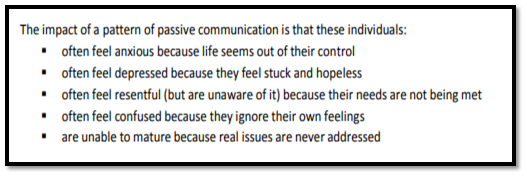
(Source: Intervention and Center, 2014)
Appendix 2: Impact of Aggressive communications style
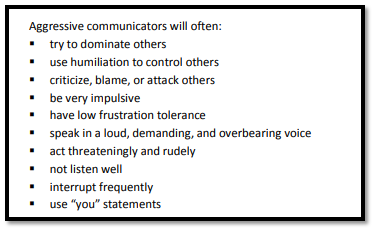
(Source: Intervention and Center, 2014)
Appendix 3: Impact of Passive-aggressive communications style

(Source: Intervention and Center, 2014)
Appendix 4: Impact of Assertive communications style

(Source: Intervention and Center, 2014)












